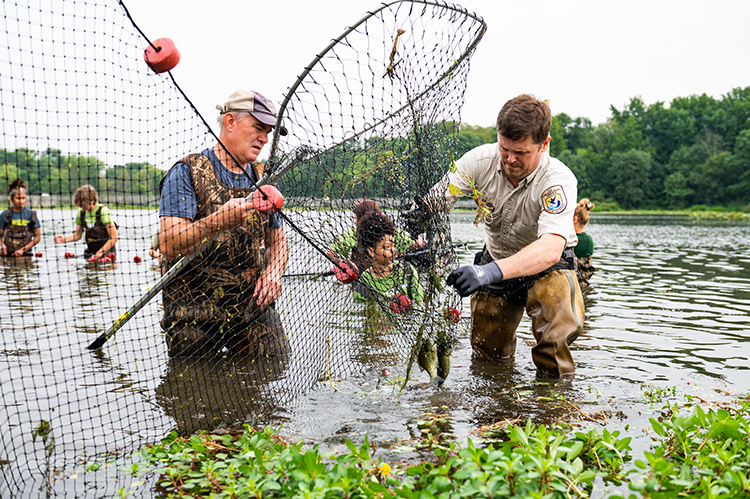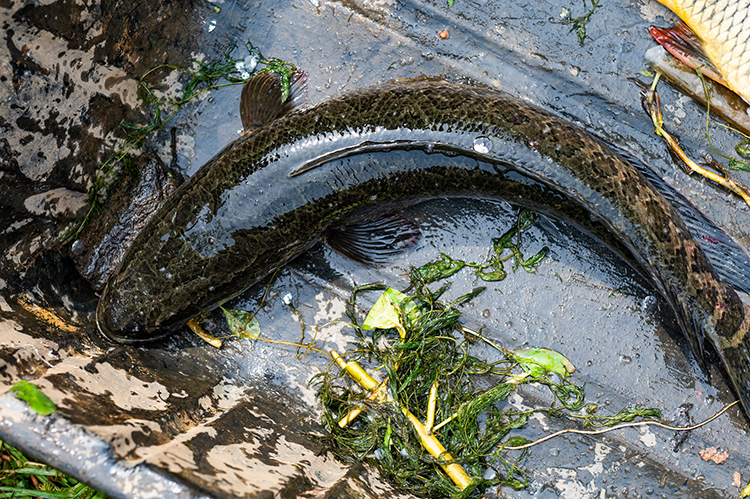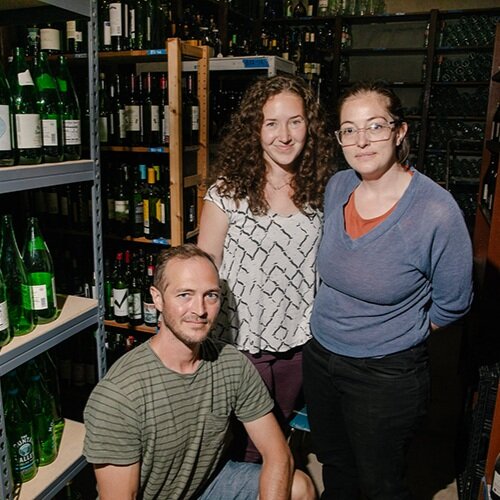There’s a shallow lagoon surrounded by embankments at John Heinz National Wildlife Refuge at Tinicum that provides a good habitat for the northern snakehead and the common carp.
Because the two invasive fish species are originally from other places in the world but have thrived in our waters to the detriment of native species, the refuge recently hosted an “invasive fish roundup” with the goal of removing them. Refuge staff hope that reducing numbers of the exotic fish will aid habitat restoration efforts.
After the roundup, refuge staff planned to bury any fish caught—they are too toxic to eat.

Both snakeheads and carp are valued as food in their native ranges. Although it is difficult to know for sure, a leading explanation for how snakeheads got into North American waterways is that anglers released fish purchased live at markets. They hoped the fish would breed in their new homes and produce plenty more for the anglers to catch and take home. If that’s the case, the mission succeeded.
“It is very important for anglers and their families
to know what is in the fish they are eating…”
— Tracy Carluccio, deputy director at Delaware Riverkeeper Network
Common carp originally hail from Central Asia but were so tasty that the ancient Romans introduced them to Western Europe. In the late 1800s government fish agencies introduced carp to the United States to establish them as a food source. Since then, carp have somewhat fallen out of favor due to their bony flesh. (That said, I, along with millions of other Jews, have eaten them as gefilte fish.)
It should surprise no one to hear that Philadelphia has a long history of pollution. Industrial chemicals discharged into our rivers over the centuries linger in mud at the bottom, and waste dumped on the land continues to seep into the water. Ongoing air and water pollution add to the mix. Garrett White, biological science technician at John Heinz, pointed out two nearby Superfund sites that are contaminated with heavy metals and polychlorinated biphenyls (PCBs), among other toxic chemicals.
Some heavy metals and PCBs have a tendency to grow more concentrated, or bioaccumulate, as they move up the food chain. Algae and other tiny organisms pick up these pollutants from the water, and when animals eat them, they retain the toxicants in their flesh. Their predators repeat the process, so that the fish at the top end up particularly contaminated.
Fish contamination isn’t obvious outside of the laboratory. Anglers judging fish safety by appearance or whether the water was cloudy or smelled funky will miss heavy metals and chemicals that build up slowly and are toxic even at low concentrations.
“It is very important for anglers and their families to know what is in the fish they are eating, how to safely prepare fish for consumption and any restrictions on fish consumption,” says Tracy Carluccio, deputy director of the Delaware Riverkeeper Network. She points out that high-risk populations such as pregnant or nursing women have to be more restrictive to avoid exposing the very vulnerable—the fetus or infant.
State environmental agencies like the Pennsylvania Department of Environmental Protection (DEP) publish guides to how much fish people can safely eat from our state’s waterways. For example, the DEP recommends only eating one meal per month of white perch, channel catfish, flathead catfish or striped bass from the Delaware Estuary, which includes the tidal portions of Philadelphia creeks and rivers. The DEP recommends eating carp from these waters no more than six times per year.
But getting the word out about these recommendations isn’t always easy.
The DEP publishes its fish consumption advisory in English, a language not necessarily understood by anglers from immigrant communities in which freshly caught fish is a traditional and routine meal.
The Delaware Riverkeeper Network, however, has compiled these advisories from the states within the Delaware River watershed and has worked to inform anglers who are not native English speakers of the risks.
“We did research using published data and census information, and we factored in the languages spoken by groups we work with,” explains Carluccio. “We chose Spanish, Vietnamese and Khmer [Cambodian] based on the communities in the Delaware River watershed that we thought would most benefit from this information.”
Back at the refuge, staff supplement signage with hands-on outreach.
“It’s a challenge that we’re still trying to address,” says White. “The best way for us to do it is walk along and have conversations when we see people.”
Plenty of anglers already get the message. Rubin Thomas, who has fished at the refuge for more than 45 years, is one.
“These days I like to fish for snakeheads, even though I don’t eat snakeheads from these waters particularly,” he explains, aware of the risks.
Alex Tat, 19, has been fishing with his father since before he can remember, catching a variety of species.
“We tend to eat them,” he says. His father knows about the fish advisory but takes the limits as general recommendations.
“He knows not to eat a lot of it,” Tat explains.
White looks forward to a day when tests show the fish are safe to eat.
Until then, the refuge partners with the Pennsylvania Fish and Boat Commission and the University of Pennsylvania to test tissue samples of fish caught in its waters to directly measure their toxicity.
“We hope to tell people eventually, ‘Hey, this is good,’ ” White says.










